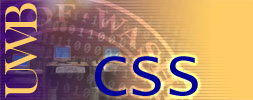
 |
|
Optical Landmark Detection for Spacecraft Navigation
Yang Cheng, Andrew E. Johnson, Larry H. Matthies, Clark F. Olson In Proceedings of the 13th Annual AAS/AIAA Space Flight Mechanics Meeting, Ponce, Puerto Rico, February 2002. Optical landmark navigation using craters on the surface of a central body was first used operationally by the Near Earth Asteroid Rendezvous (NEAR) mission. It has proven to be a powerful data type for determining spacecraft orbits above the target for close flybys and low altitude orbiting. Tracking individual landmarks, which are small craters, enables orbit determination accuracies on the order of the camera resolution or several meters. This exceeds the accuracy that can be obtained from radiometric data alone. Currently, most of optical landmark navigation operations, such as crater detection, tracking, and matching etc. are done manually, which is extremely time consuming, tedious and sometime unmanageable. Because of the lengthily operation time and the deep-space communication delay, manual operation cannot meet the requirements of rapid and precise spacecraft maneuver such as close orbiting, fast flybys and landing. Automating this operation can greatly improve navigation accuracy and efficiency and ultimately lead to an on-board autonomous navigation capability. In this paper, a new crater detection algorithm is suggested. Experimental studies show that this new algorithm can achieve sub-pixel accuracy in position, its detection rate is better than 90% and its false alarm rate is less than 5%. These good characteristics indicate that it is an ideal crater detection algorithm for spacecraft optical navigation. |